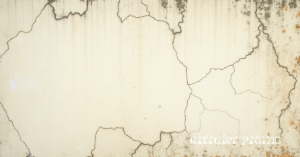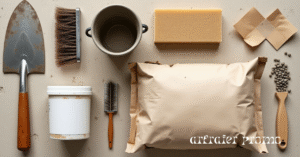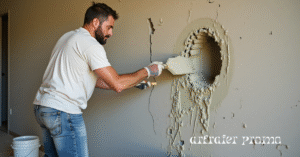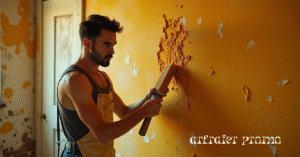Stucco is a durable and stylish exterior finish, but over time, cracks, holes, and water damage can appear. Whether it’s from settling, moisture intrusion, or age, patching stucco isn’t as complicated as it might seem. With the right tools and a little patience, you can restore the beauty and integrity of your stucco walls yourself.
This complete DIY guide will walk you through everything you need to know about how to patch stucco, including tools, step-by-step instructions, repair costs, and expert tips.
What Causes Stucco Damage?
Stucco can crack or break for several reasons:
-
Natural settling of the house
-
Water damage behind the stucco layer
-
Poor installation or incorrect mixing ratios
-
Freeze-thaw cycles in colder climates

Identifying the type and cause of damage is key before applying a fix.
Tools and Materials Needed to Patch Stucco
Before you start your repair, gather the following tools and supplies:
Tools:
-
Cold chisel and hammer (for removing loose stucco)
-
Wire brush
-
Trowel or putty knife
-
Mixing bucket
-
Sponge
-
Utility knife

Materials:
-
Pre-mixed stucco patch or stucco mix
-
Bonding agent (optional)
-
Stucco colorant (if matching the existing color)
-
Waterproofing sealant (for water-prone areas)
How to Patch Stucco: Step-by-Step DIY Guide
Step 1: Assess the Damage
Look for:
-
Hairline cracks (less than 1/8 inch wide)
-
Larger cracks or holes
-
Bubbling, which may indicate water damage underneath
Minor cracks need only surface treatment, while deeper damage might require removal and replacement of the old stucco layer.
Step 2: Prep the Area
-
For Cracks: Use a utility knife to widen and clean the crack slightly. This helps the new material adhere better.
-
For Holes: Tap around the hole with a hammer and remove any loose or damaged stucco using a chisel.
Then, clean the area using a wire brush and rinse it lightly with water.
Step 3: Apply a Bonding Agent
If you’re patching bare surfaces (especially concrete or masonry), apply a bonding agent to ensure the new stucco adheres properly.
Step 4: Mix and Apply Stucco Patch
-
Follow the manufacturer’s instructions for pre-mixed or dry stucco mix.
-
Use a trowel to press the patching compound into the crack or hole.
-
Smooth the surface to match the existing texture.
-
For larger holes, apply in layers and allow each layer to partially set before applying the next.

Step 5: Texture and Blend
Use a sponge, brush, or your trowel to mimic the texture of the surrounding stucco. This step is important for a seamless finish.
Step 6: Cure and Dry
Let the patched area cure for at least 24–48 hours. Keep the surface moist by misting it occasionally to prevent cracks during the curing process.

Step 7: Paint or Seal
If your stucco is painted, match the color and apply paint after the patch dries. For areas prone to water exposure, apply a waterproofing sealer. You can also learn more about how to repair stucco effectively with expert insights.
Stucco Patch Repair Cost (DIY vs. Professional)
| Repair Type | DIY Cost Estimate | Professional Cost Estimate |
|---|---|---|
| Hairline cracks | $15 – $30 | $100 – $300 |
| Small holes (1–3 sq ft) | $30 – $60 | $300 – $600 |
| Large patchwork (wall) | $75 – $150 | $800 – $2,000+ |
DIY is often significantly cheaper, but professionals may be better for structural issues or water-damaged stucco.
When to Call a Professional
If you notice any of the following, consult an expert:
-
Soft or crumbly stucco
-
Mold or water stains inside your home
-
Cracks wider than ¼ inch
-
Repeated patch failures in the same spot
Tips for a Successful Stucco Patch
-
Don’t patch over dirty or wet surfaces.
-
Avoid repairing in extreme temperatures or direct sunlight.
-
Always use a bonding agent for better adhesion.
-
Match texture and color before the mix dries.
Conclusion
Learning how to patch stucco can help you maintain your home’s appearance and prevent deeper structural issues. Whether you’re dealing with cracks, holes, or water damage, following these step-by-step instructions makes the process simple and manageable.
If you maintain your stucco regularly and patch issues early, you can extend its life by decades—without spending a fortune on contractors.
Frequently Asked Questions (FAQs)
Can old stucco be repaired?
Yes, old stucco can be repaired effectively. Even decades-old stucco can be patched if the underlying structure is sound. Cracks, holes, and discoloration can be fixed using modern patching compounds.
What is the best fill for stucco cracks?
For hairline cracks, use acrylic latex caulk or elastomeric stucco patch. For wider cracks and holes, use pre-mixed stucco repair or a sanded patching compound designed for stucco.
Is a stucco patch strong?
Yes, when done correctly, a stucco patch can be just as strong as the original finish. Using quality materials and allowing proper curing ensures long-term durability.
How to fix leaky stucco?
Leaky stucco is usually caused by water intrusion behind the wall. To fix it:
-
Remove the damaged section.
-
Inspect and repair the moisture barrier or lath underneath.
-
Apply a new stucco patch.
-
Finish with a waterproof sealant.
If you’re unsure of the leak source, hire a pro for a moisture inspection.
How to patch stucco wall?
To patch a stucco wall:
-
Chisel out the damaged area.
-
Clean and prep the surface.
-
Apply bonding agent.
-
Use stucco mix to fill and smooth the area.
-
Match the texture.
-
Let it cure and paint if needed.
Can I repair stucco myself?
Yes, most small to moderate stucco repairs can be done by homeowners. With the right tools and patience, DIY stucco patching can save you hundreds of dollars.






